SQL Queries for Database Operations and Data Retrieval Tasks
VerifiedAdded on 2020/03/23
|6
|703
|93
Homework Assignment
AI Summary
This assignment provides a series of SQL queries and their corresponding outputs, addressing various database operations. The queries cover a range of tasks, including calculating sums of line totals for invoices, locating records with missing values, finding customers based on balance ranges, and retrieving customer information based on invoice totals. The solutions demonstrate the use of SELECT statements, JOIN operations (including natural join and inner join), GROUP BY and HAVING clauses, and aggregate functions. The queries also show how to retrieve customer names based on invoice presence or absence, find customers with maximum invoice totals, count invoice occurrences per customer, list purchases by specific customers, and retrieve vendor and product information. The assignment serves as a practical guide to writing SQL queries for data retrieval and manipulation in a relational database environment.
1 out of 6
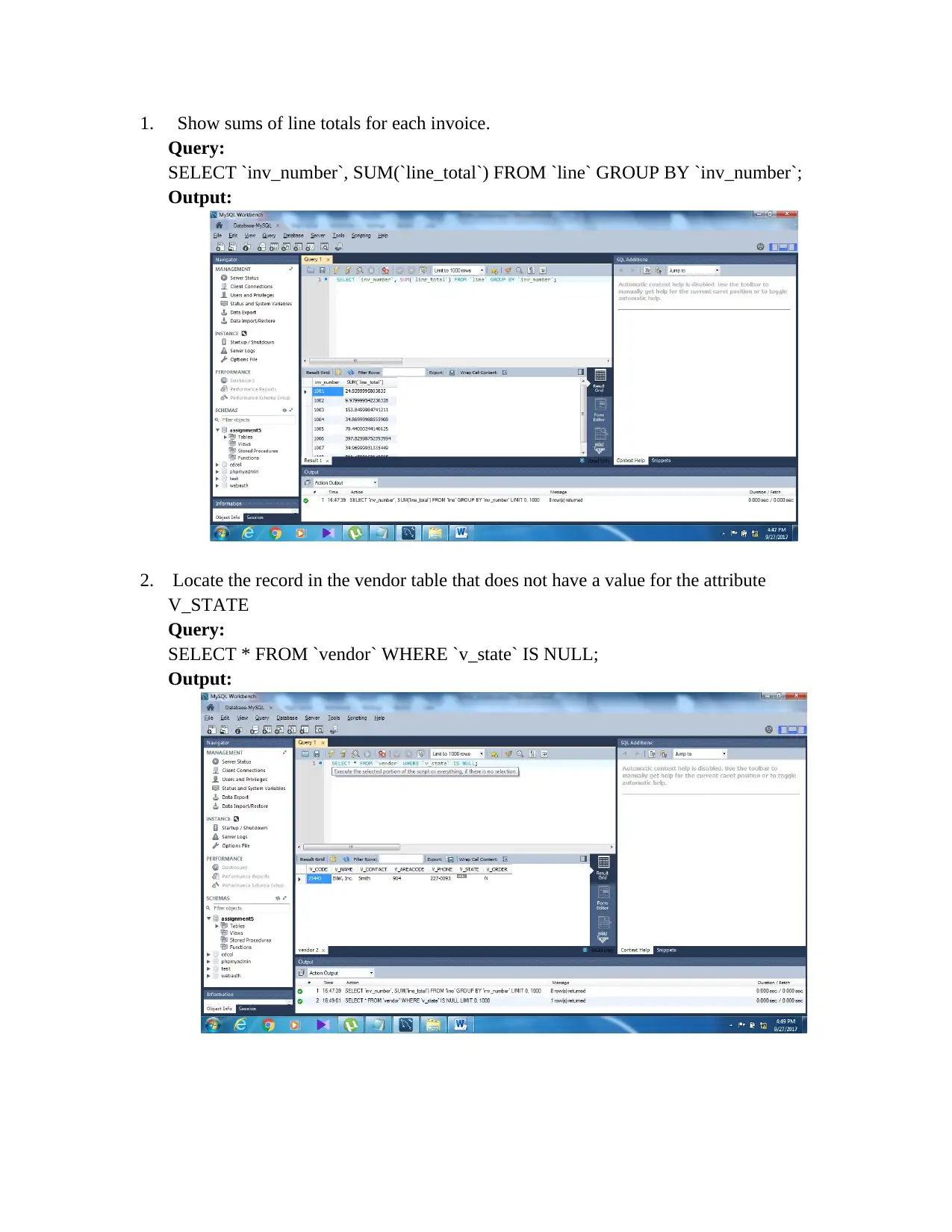
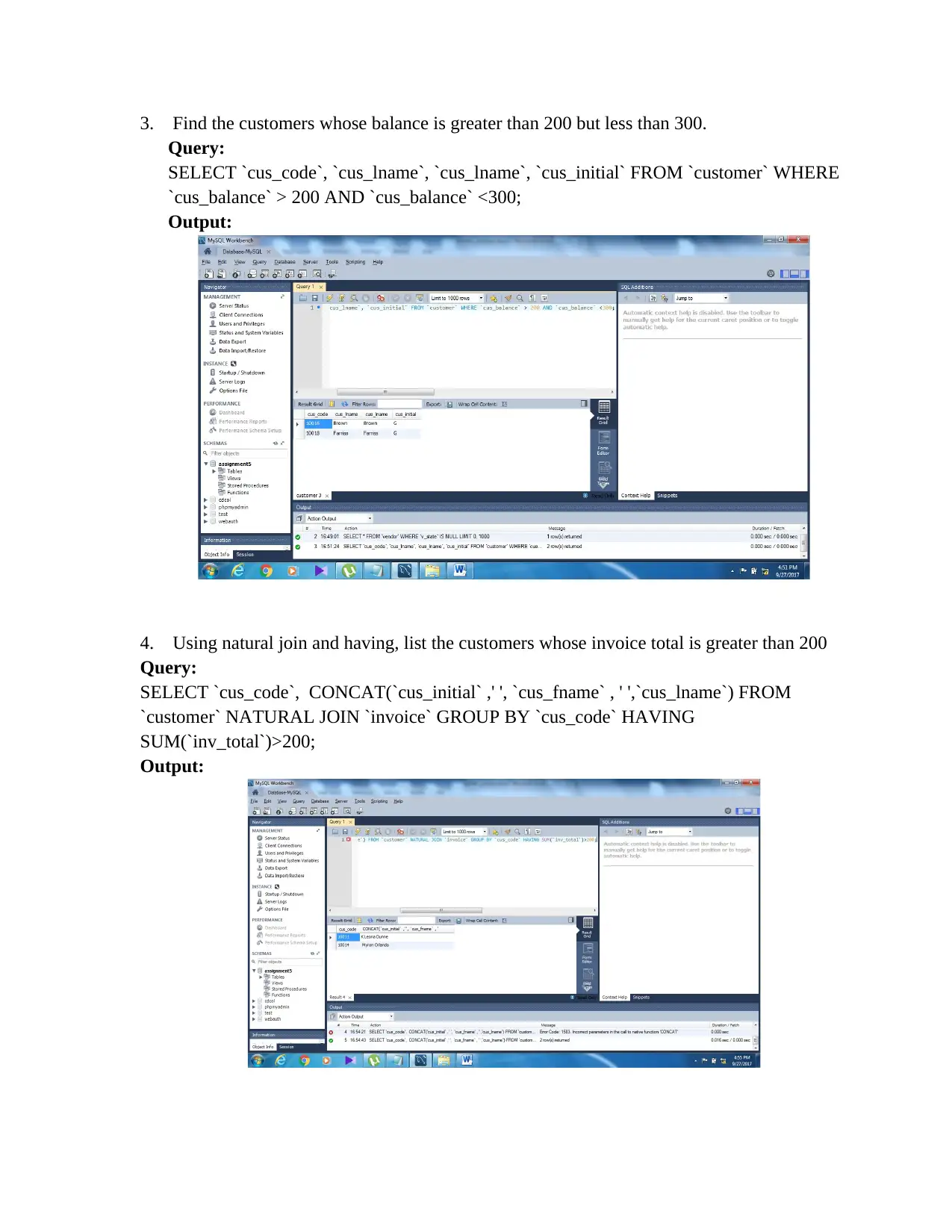
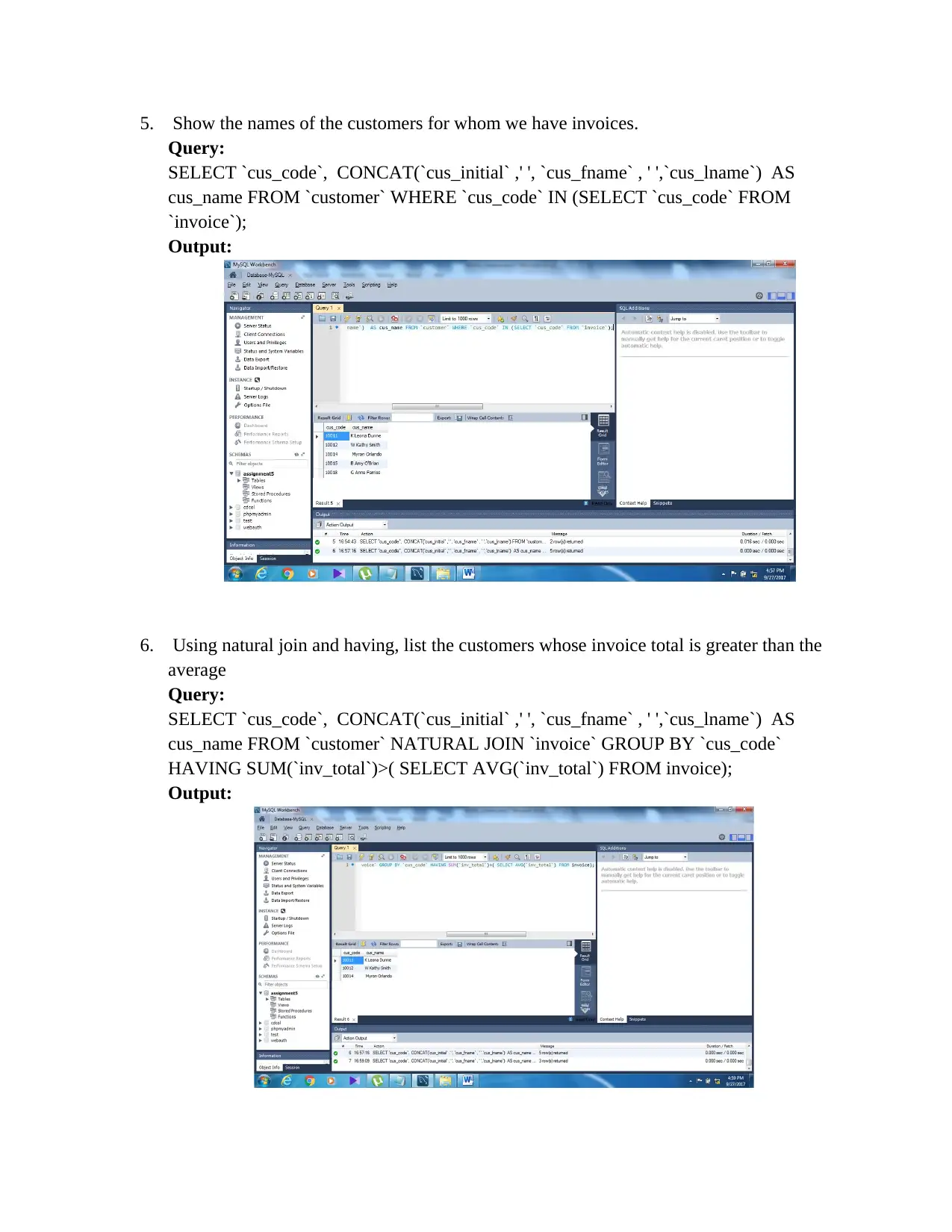

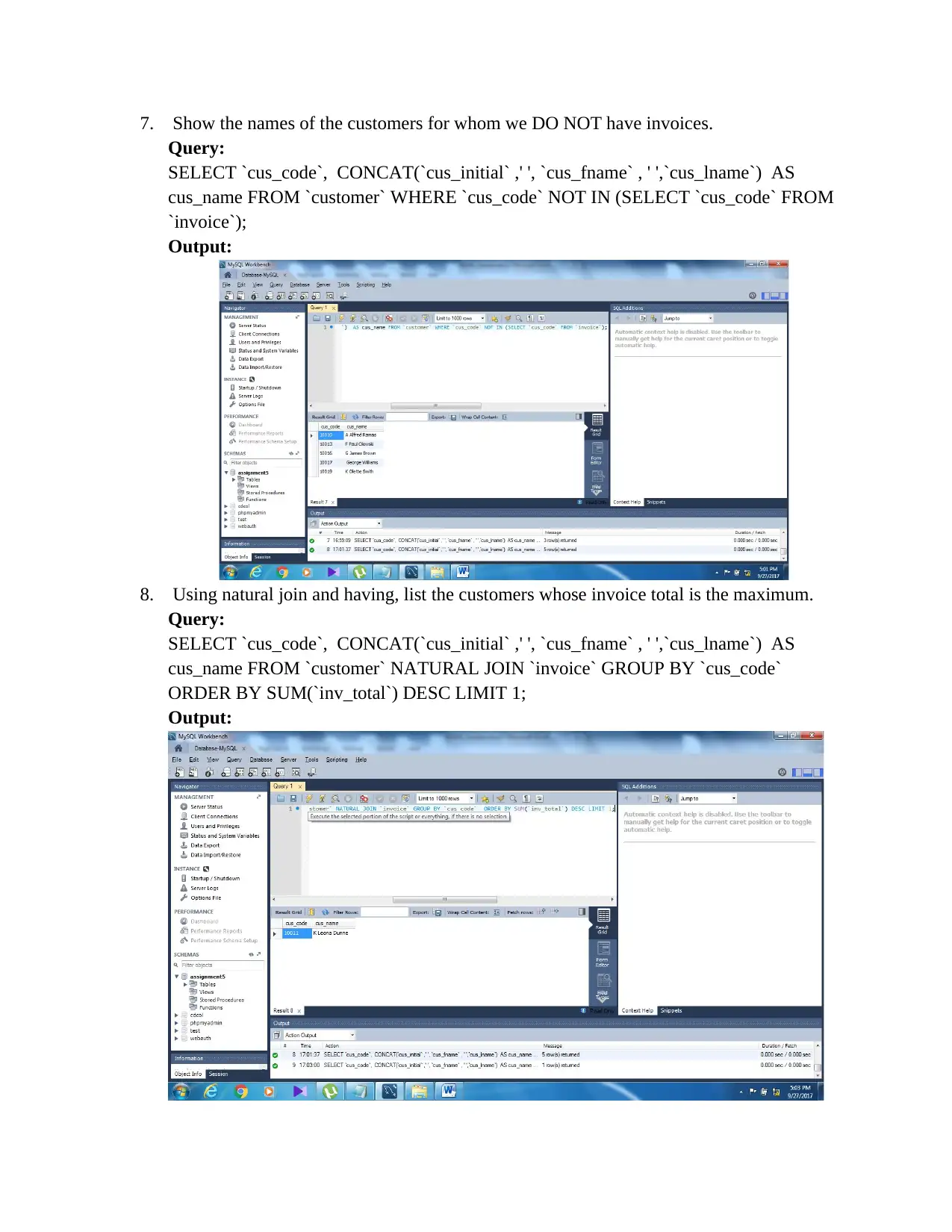
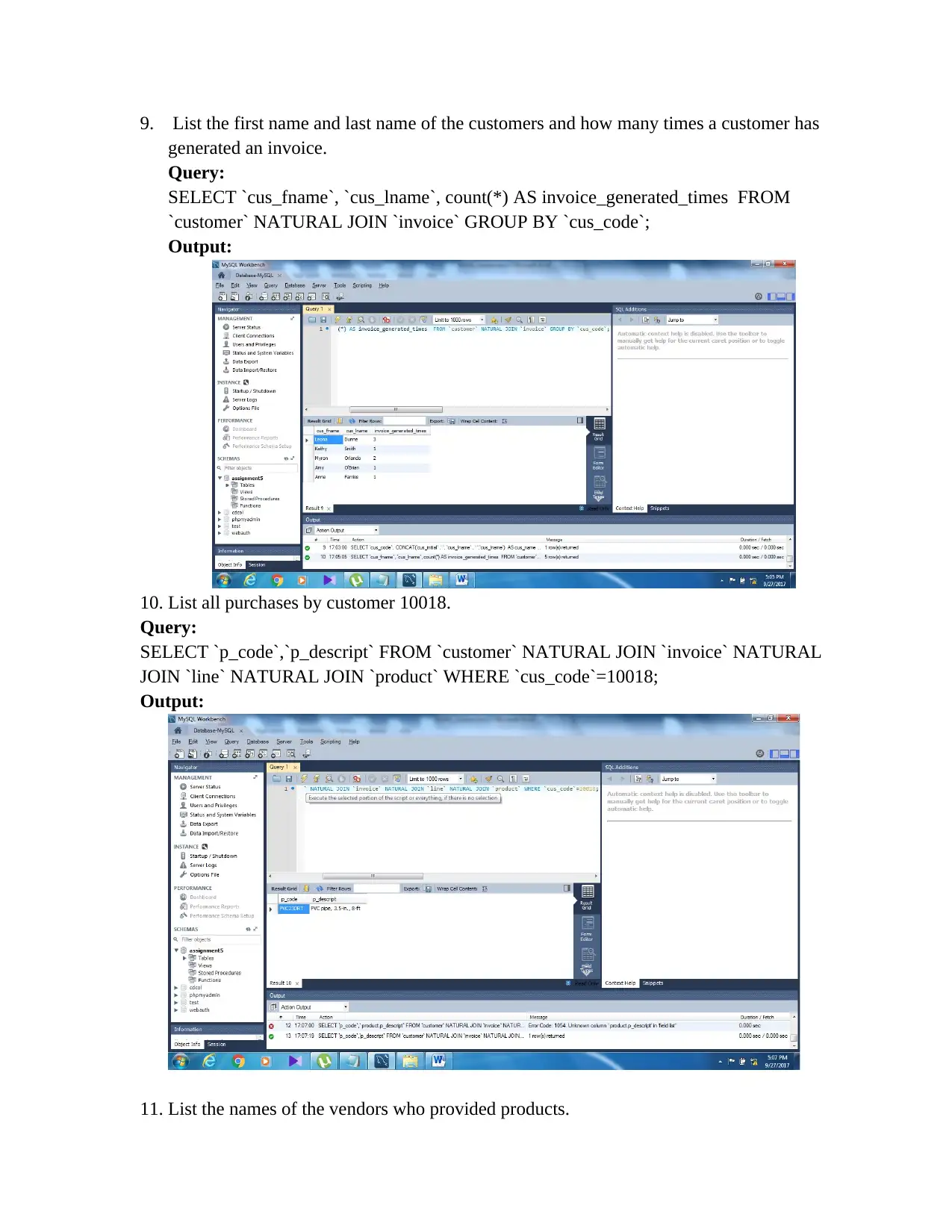
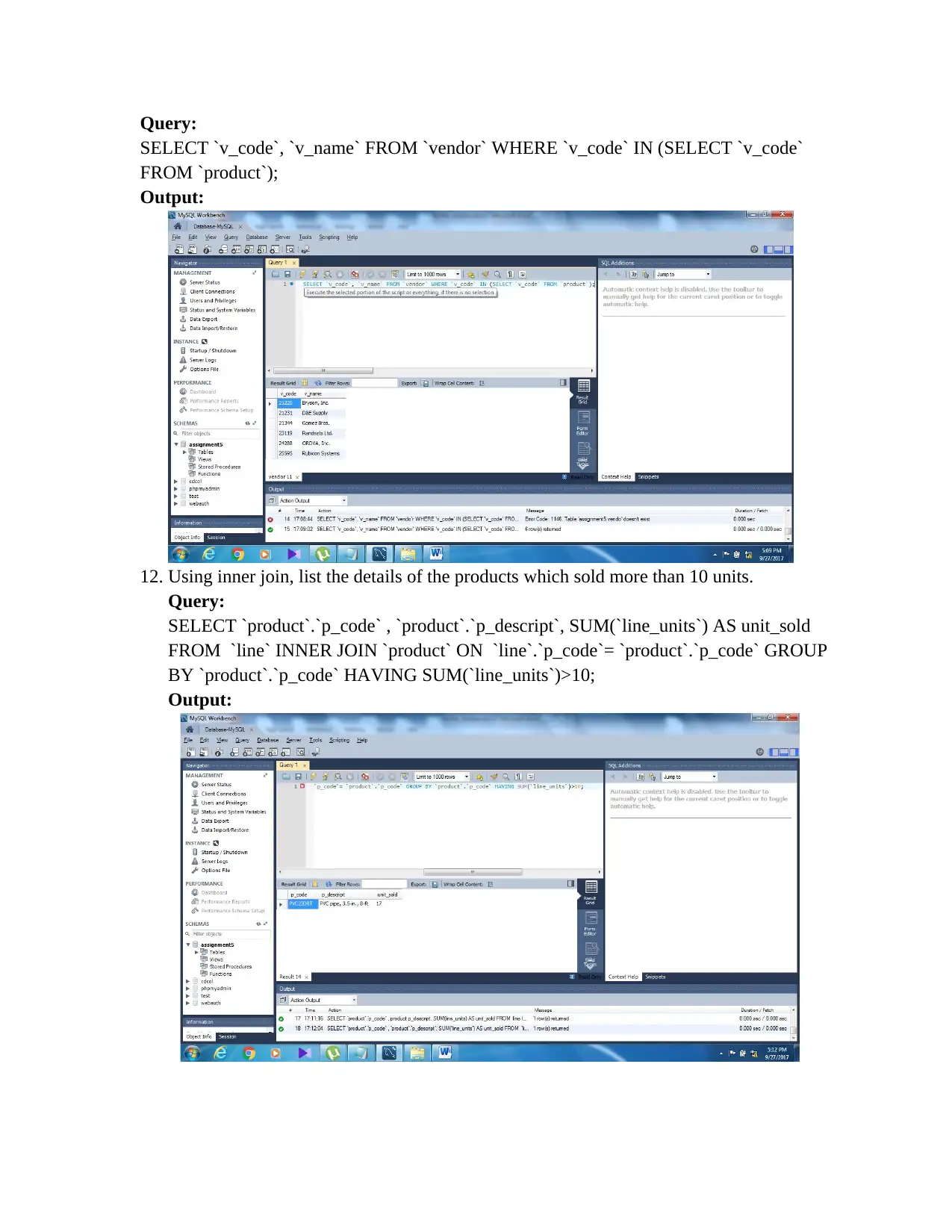






![[object Object]](/_next/static/media/star-bottom.7253800d.svg)